Thies’ Pieces: Top Jimmy
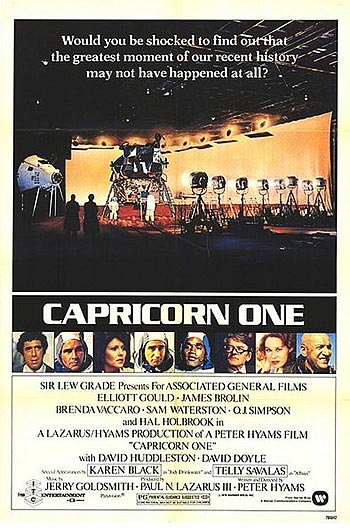 It’s turning out to be quite the summer of government scandal. Pick your poison: The IRS. The NSA. The AP. Benghazi. James Rosen.
It’s turning out to be quite the summer of government scandal. Pick your poison: The IRS. The NSA. The AP. Benghazi. James Rosen.
It’s not surprising, then, that this month we are also celebrating the 35th anniversary of one of the penultimate conspiracies of the U.S. government.
I’m referring of course to the flight of Capricorn One.
Here’s the skinny. James Brolin and crew were the first men slated to land on Mars. However, right before their launch a technical problem was discovered in their ship and the government pulled them out. Now they could have just postponed the flight, but no, the government had a better idea (I’ve heard that one before): film a fake Martian landing in an Arizona soundstage.
An investigative reporter was tipped off to the rouse by an insider, and the government decided it had to fake the astronauts’ deaths a la crash landing to conceal the truth. Which meant they’d have to kill the astronauts for real. Jimmy Brolin and his mates caught wind and went on the lam, black helicopters in tow.
Get Rich or Lie Tryin’
 We kinda figured this might happen.
We kinda figured this might happen.
If you remember from a few months back, we sent our WWEnd intern Barry on the job hunt with a resume laden with stints at fictitious evil sci fi corporations. This was in response to the government’s assertion that the job market was getting better; we thought we’d just put that to the test. Plus, it seemed a good idea at the time to see if any employers caught on to our ruse.
With the latest media reports that over 9% of the country is unemployed, and a further 16% is underemployed (that’s a quarter of all working-age Americans, people!), it was a long shot at best that our man Barry would land anything more promising than Junior Assistant Burger Flipper.
Well, Barry beat the odds and got a job. A real job, a six-figure job. And he’s decided to accept.
(Apparently, New England pharmaceutical companies pay better than the owners of science fiction websites. Who knew? Those male enhancement pills must be more popular – and lucrative – then I initially suspected.)
For legal reasons we can’t divulge our former intern’s new employer, but Big Unnamed Pharmacy Company 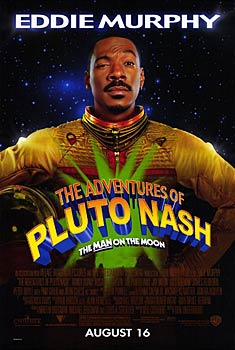 couldn’t resist a candidate like Barry – especially after his extensive experience in the Credit Department at Tyrell Corporation, as well as his five years of service as a Financial Risk Analyst at Weyland-Yutani and seven years as an Account Manager at Soylent Corporation. (Which is kind of funny when you consider Barry, who’s only 25, had a fictional career that spanned 18 years.)
couldn’t resist a candidate like Barry – especially after his extensive experience in the Credit Department at Tyrell Corporation, as well as his five years of service as a Financial Risk Analyst at Weyland-Yutani and seven years as an Account Manager at Soylent Corporation. (Which is kind of funny when you consider Barry, who’s only 25, had a fictional career that spanned 18 years.)
So much for background checks.
Anyway, with it being Labor Day weekend, it was only fitting to report that Barry came to us, resignation in hand and big fat smile on his big fat face. I guess it serves us right.
Regrettably, Barry’s treason does not bode well for the rest of the WWEnd interns. While I’m personally understanding of Barry’s desire to do better for himself, our WWEnd Chief Financial Officer isn’t quite as forgiving, and he’s decided to send a message to the other interns.
As a result, our entire intern family is deep in the throes of a special project at the behest of our CFO, who has dictated that they spend Labor Day weekend crafting a 300-page report on why The Adventures of Pluto Nash failed at the box office. To include pie graphs.
While our interns are sweating out repeated viewings of Pluto Nash, I figured that in their honor I would pull together a list of 10 Guys in Need of a Career Change. To follow are some real working class stiffs (in a few cases, literally!)…
10 Guys in Need of a Career Change
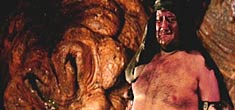 10.) Malakili the Rancor Keeper (played by Paul Brooke) / Return of the Jedi (1983)
10.) Malakili the Rancor Keeper (played by Paul Brooke) / Return of the Jedi (1983)
Sometimes known as the Larry Fortensky of the sci fi universe, this poor sap suddenly found himself underemployed when Luke Skywalker showed his pet monster the door. On the upside, with the Rancor gone he’s saving a bundle on kitty litter.
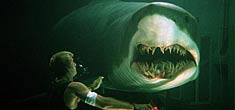 9.) Carter Blake, Shark Wrangler (played by Thomas Jane) / Deep Blue Sea (1999)
9.) Carter Blake, Shark Wrangler (played by Thomas Jane) / Deep Blue Sea (1999)
Talk about a misleading job posting, this one definitely looked better on paper: “Interact with marine life in a cutting edge oceanographic facility. Great pay, solid benefits, personal chef onsite.” Sorry, but this is not the Beluga Whale exhibit at Sea World.
 8.) Pig Killer (played by Robert Grubb) / Mad Max Beyond Thunderdome (1985)
8.) Pig Killer (played by Robert Grubb) / Mad Max Beyond Thunderdome (1985)
I pride myself on being a bacon man. But I draw the line at what I’m willing to do for the swine candy, such as having to shovel pig poop in Jimmy Dean’s Inferno. This job would almost make me consider going vegan. Almost.
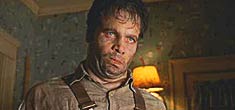 7.) Zap ‘Em Exterminator (played by Ken Thorley) / Men in Black (1997)
7.) Zap ‘Em Exterminator (played by Ken Thorley) / Men in Black (1997)
Every job has its share of pests who delight in bugging you. It’s not a big problem, until one goes all Full Metal Jacket on you; then you’re hosed. And you thought Delbert McClintock had issues.
 6.) Floral Arranger Boy, aka Harkonnen’s Victim (played by Ernesto Laguardia) / Dune (1984)
6.) Floral Arranger Boy, aka Harkonnen’s Victim (played by Ernesto Laguardia) / Dune (1984)
Who knew that being an FTD delivery man was so fraught with danger? Having a boxed wine spigot inserted into your heart might be a tip off that this job is not a long-term assignment. And then there’s the boss in dire need of sensitivity training…
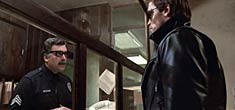 5.) Desk Sergeant (played by Bruce M. Kerner) / The Terminator (1984)
5.) Desk Sergeant (played by Bruce M. Kerner) / The Terminator (1984)
The irony of course is you’d think desk jockey would be the safest job on the force. Funny how an angry time traveling cyborg can change that equation in a hurry. The Los Angeles DMV wouldn’t see this much action again until Lindsay Lohan came along.
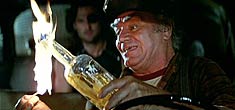 4.) Cabbie (played by Ernest Borgnine) / Escape From New York (1981)
4.) Cabbie (played by Ernest Borgnine) / Escape From New York (1981)
Driving a cab in New York City? Sure, that’s rough. Make it an apocalyptic-style maximum security prison New York City replete with lethal near-mutants, and it’s extreme. But throw in the moniker “comic sidekick,” and you have a recipe for fatality.
 3.) Remy (played by Jude Law) / Repo Men (2010)
3.) Remy (played by Jude Law) / Repo Men (2010)
Healthcare may be a growth industry, but for blue collar schmoes like Jude Law it just means he’s got to work his guts out. Seriously. Hey Jude, if your supervisor tells you to take heart, put in for a transfer.
 2.) Dr. Uwe Boll (played by Dr. Uwe Boll) / Director of classics such as Bloodrayne and Alone in the Dark
2.) Dr. Uwe Boll (played by Dr. Uwe Boll) / Director of classics such as Bloodrayne and Alone in the Dark
I don’t mean to pick on a guy when he’s down, but when a million people sign an online petition asking you to quit, it bears consideration. (If it’s any consolation, Dr. Boll, I’m faced with the same thing. Hang tough, brother.)
 1.) Winston Smith (played by John Hurt) / 1984 (1984)
1.) Winston Smith (played by John Hurt) / 1984 (1984)
Memo to Big Brother: when it comes to company mission statements, “the worst place in the world” could use a little work. This movie redefined how to conduct a performance review, with Winston Smith as the epitome of put-upon employee. As in, “My boss wants to put a rat upon my face.”
Good luck, Barry. Call if you need a reference.
What a Long, Strange Trip It’s Been
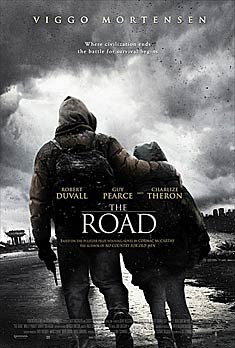 If I asked you to name the most important science fiction film of 2009, what would you answer?
If I asked you to name the most important science fiction film of 2009, what would you answer?
Moon? District 9? Avatar?
Tough question, I know. Each has, in its way, something worthy to advocate for the title of 2009’s most significant genre film.
In a year loaded with sci fi pictures (such as Star Trek, Watchmen, Pandorum, Terminator Salvation, 2012, Gamer, Surrogates, and on and on), it’s the ones that truly drive toward a real, authentic human story that stay with us the most, especially Moon and District 9.
But for my money, the answer is not the personal tragedy of Moon. Or the social commentary of District 9. Or the grand spectacle of Avatar.
The most deeply felt and important science fiction film of 2009 is simply The Road.
If you’re not familiar with The Road, it stars Viggo Mortensen as a father who, along with his ten year old son, is travelling through the post-apocalypse wasteland that was once America in an effort to head south toward the futile hope for greener pastures. In this grim landscape where all the animals and vegetation have died off (as well as most of human civilization – at least, the better parts), Viggo and the boy contend with the constant specter of starvation and roving bands of cannibals.
Alright, I know the word “apocalypse” probably caught your eye (and I’m sure “cannibals” didn’t go unnoticed, either), and you likely already started forming some opinions. Let me stop you in your tracks. This is not The Road Warrior. Or A Boy and His Dog. Or any of the other dozen or so apocalyptic wasteland films that might jump to mind.

The Road is something completely and entirely different.
I’ve seen some reviews that spoke of The Road’s echoes of Samuel Beckett’s Waiting for Godot, and with the ashen landscape that Viggo (aka The Man) and his son The Boy are immersed in, it’s easy to see that. And I believe I saw at least one review where Albert Camus was mentioned, and I had already myself come to the conclusion that The Plague could be a possible kindred spirit. But in considering The Road for a few days now, I think the closest literary equivalent for the film (besides its own Cormac McCarthy source material of the same name) would have to be Elie Wiesel’s Night.
Night is of course Wiesel’s famous memoir of his and his father Shlomo’s decent into the hell of Auschwitz – the journey of a father and son fording a wasteland, beset on all sides by extreme human depravity. 
I see The Road as a photographic negative of Night – in Night, the story is told from the son’s point of view. In The Road, it is told from the father’s. In both cases, the protagonist ties his meager hope for retaining a sense of humanity amidst the direst conditions imaginable through the constant action of trying to salvage the life of a loved one.
In both narratives, the most intimate of human relationships – that of a parent and a child, the wellspring of future hope and promise – is set in direct opposition to a panorama of agony and negation. The landscapes our heroes traverse are populated with monsters who happen to be people – not aliens or zombies or whatever – just people.
One scene in The Road confirmed this for me. Viggo and the boy narrowly escape a country estate where a group of cannibals has taken up homestead. The camera zooms in on the cannibals as they come out on their porch, looking to the nearby woods for any sign of the escapees. And the most remarkable thing – the cannibals look exactly like you. And like me. Not particularly weird or freaky. Not Leatherface or what have you. Regular people.
John Hillcoat (the film’s director) seemed to be making the point, “Yes, they’re just folks.”
(I seem to recall reading something about George Romero’s Night of the Living Dead where Romero said that the reason his zombies were so scary is that they were your neighbors. Too true.)
The resounding brutality of Night and The Road germinates from within the human heart and its failure, on a massive scale, to love its fellow human being. On these stages, the parent-child bond is all the more poignant and amplified when set in counterpoint.
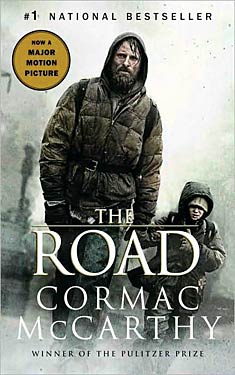 In such worlds where everything is grief and suffering and despair, the question is not would you die for your loved one, but rather would you live for them? In The Road the Boy becomes his father’s sole reason for living, and the tenderness and love with which the father struggles to keep his son alive in so harsh a reality is what drives the film. The most heroic act that Viggo performs in the film is to love his son. The best stories are not about “out there” but rather about “in here,” and that is why I think The Road is the most significant genre film of 2009.
In such worlds where everything is grief and suffering and despair, the question is not would you die for your loved one, but rather would you live for them? In The Road the Boy becomes his father’s sole reason for living, and the tenderness and love with which the father struggles to keep his son alive in so harsh a reality is what drives the film. The most heroic act that Viggo performs in the film is to love his son. The best stories are not about “out there” but rather about “in here,” and that is why I think The Road is the most significant genre film of 2009.
As an aside, and not at all by my own design, I started writing this piece last Sunday, which was the Feast of the Assumption of the Blessed Virgin Mary, the most famous parent in the history of mankind. It so happened that on that day, my wife shared with me a daily reflection written by St. Maximilian Kolbe, a Catholic priest and great devotee of Our Lady who famously gave his life in Auschwitz so as to spare the life of a fellow prisoner. (The prisoner, a husband and father of two, had cried out for his family when he was chosen to be executed, prompting St. Kolbe to successfully petition to take his place in the death chamber.)
In the daily reflection taken from an essay that St. Kolbe had written before the war, he remarked, “… the love of parents towards their children is superior to any other love.” I share this anecdote because the coincidence of his remark being shared with me on Mary’s Feast day when I contemplated the parental love of The Road (and recalled the heartbreaking witness of Night)is too strong not to share it.
Take This Job and Shove It
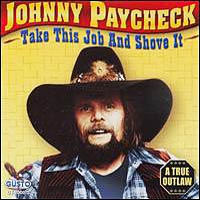 You may recall earlier this summer we told you our WWEnd intern Barry was going to attempt to land a job using a résumé peppered with evil corporations from science fiction films.
You may recall earlier this summer we told you our WWEnd intern Barry was going to attempt to land a job using a résumé peppered with evil corporations from science fiction films.
As part of this project, we’ve been collating a list of evil companies, and in doing research on the web we discovered a few interesting facts:
1. Top Ten lists of evil sci fi companies abound
2. All the lists essentially repeat the same companies over and over
(NOTE TO BUDDING EVIL CORPORATE ENTREPRENEURS: If you are looking to forever immortalize your brand on a universe of Top Ten lists, do something really nasty. Like send astronauts to their death a la “extraterrestrial distress signal” so as to collect an alien sample. Or dye Rutger Hauer’s hair platinum blonde and have him run around downtown Los Angeles in a pair of Depends. Whatever works.)
Given the pervasiveness of such lists, it was only a matter of time before the WWEnd brass stopped by my office to demand that we produce our own, so as not to fall behind the competition.
(You may also recall these were the same corporate suits who demanded we do a Hot Sci Fi Babe list, resulting in the infamous “Over 60” post.)
Okay, I can play along. I appreciate ad dollars as much as the next guy. But we’re not going to reproduce the same list of companies that everyone else seems fixated on. No, we’re going to approach this as we do with all things science fiction: a little differently.
So here we go with the Top Ten Evil Corporations of Science Fiction Not on Anyone Else’s Top Ten List of Evil Corporations. Johnny Paycheck, eat your heart out.
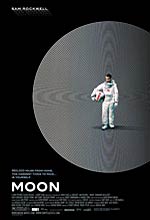 10. Lunar Industries (Moon, 2009) – Seriously, people? How does this company not make other lists? Subjecting an army of Sam Rockwell clones to indentured servitude is bad. But it’s in the corporate lie that’s told to each clone (i.e. that “his” wife and daughter is waiting for “him” on Earth at the end of his shift) where this company earns its malfeasance. Pretty cold hearted.
10. Lunar Industries (Moon, 2009) – Seriously, people? How does this company not make other lists? Subjecting an army of Sam Rockwell clones to indentured servitude is bad. But it’s in the corporate lie that’s told to each clone (i.e. that “his” wife and daughter is waiting for “him” on Earth at the end of his shift) where this company earns its malfeasance. Pretty cold hearted.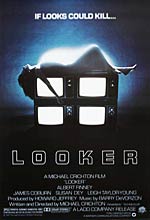 9. Digital Matrix (Looker, 1981) – Any company that turns a middle-aged Albert Finney into an action hero deserves to be on a list of bad companies. What makes this company truly simmer in badness is the ultracool James Coburn as its primary shareholder of evil and destroyer of supermodels. But what was with the laser tag guns?
9. Digital Matrix (Looker, 1981) – Any company that turns a middle-aged Albert Finney into an action hero deserves to be on a list of bad companies. What makes this company truly simmer in badness is the ultracool James Coburn as its primary shareholder of evil and destroyer of supermodels. But what was with the laser tag guns?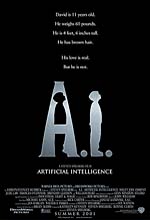 8. Cybertronics (A. I., 2001) – If your company makes unblinking Haley Joel Osment robots that develop pathological attachments to their owners, attend Ministry concerts and play Tonto to Jude Law’s Lone Ranger, you may want to rethink your business model. All joking aside, this company asks us to examine how healthy is our temptation to create people who love us even while supplying us with said people. For my money, William Hurt’s turn as company mad scientist is all the more insidious because he is so tender, genuine and honest.
8. Cybertronics (A. I., 2001) – If your company makes unblinking Haley Joel Osment robots that develop pathological attachments to their owners, attend Ministry concerts and play Tonto to Jude Law’s Lone Ranger, you may want to rethink your business model. All joking aside, this company asks us to examine how healthy is our temptation to create people who love us even while supplying us with said people. For my money, William Hurt’s turn as company mad scientist is all the more insidious because he is so tender, genuine and honest.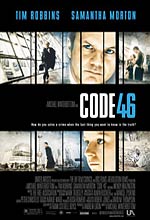 7. The Sphinx (Code 46, 2003) – Let’s see, an insurance company that manufactures documents which dictate where you can live, your ability to travel, the work you do and who you can love in an authoritarian society. Falling afoul of this über healthcare bureaucracy is everyman Tim Robbins (and I thought he was a liberal). The Sphinx gives new meaning to the term “State Farm”, but this is one good neighbor you wish wasn’t there.
7. The Sphinx (Code 46, 2003) – Let’s see, an insurance company that manufactures documents which dictate where you can live, your ability to travel, the work you do and who you can love in an authoritarian society. Falling afoul of this über healthcare bureaucracy is everyman Tim Robbins (and I thought he was a liberal). The Sphinx gives new meaning to the term “State Farm”, but this is one good neighbor you wish wasn’t there.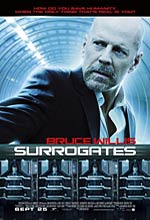 6. Virtual Self Industries (Surrogates, 2009) – Four words: Bruce. Willis. Blonde. Wig. For my money, that alone is one of the more damning examples of cinematic villainy. Compounding matters is Ving Rhames as a Rasta prophet – if Bruce should never have hair in a movie, that goes double for The Ving, people! And James Cromwell, with what I would characterize as an unhealthy attachment to avatars of young men, completes the ensemble of evil.
6. Virtual Self Industries (Surrogates, 2009) – Four words: Bruce. Willis. Blonde. Wig. For my money, that alone is one of the more damning examples of cinematic villainy. Compounding matters is Ving Rhames as a Rasta prophet – if Bruce should never have hair in a movie, that goes double for The Ving, people! And James Cromwell, with what I would characterize as an unhealthy attachment to avatars of young men, completes the ensemble of evil.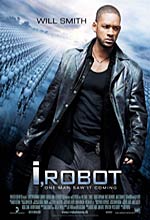 5. U.S. Robotics (I, Robot, 2004) – Female voiced supercomputer commands an army of robot soldiers to subjugate humanity. Terminator Salvation? Actually, we’re talking about I, Robot. Frequently mistaken for an episode of iCarly, this film details USR’s attempt to hijack Chicago until bionic man Will Smith gets jiggy with it. (Sidenote: Rod Blagojevich purportedly sat on USR’s board of governors.)
5. U.S. Robotics (I, Robot, 2004) – Female voiced supercomputer commands an army of robot soldiers to subjugate humanity. Terminator Salvation? Actually, we’re talking about I, Robot. Frequently mistaken for an episode of iCarly, this film details USR’s attempt to hijack Chicago until bionic man Will Smith gets jiggy with it. (Sidenote: Rod Blagojevich purportedly sat on USR’s board of governors.)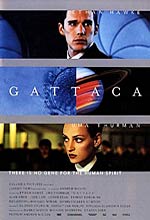 4. Gattaca Aerospace Corporation (Gattaca, 1997) – If your workplace requires you to use the urine of another man to advance your career, it’s time to polish your résumé. Hey, I’d like to be an astronaut too, but Ethan Hawke took his desire to be the next Buzz Aldrin too far. He’d have been better off just eBaying Jude Law’s hair and buying his own space program.
4. Gattaca Aerospace Corporation (Gattaca, 1997) – If your workplace requires you to use the urine of another man to advance your career, it’s time to polish your résumé. Hey, I’d like to be an astronaut too, but Ethan Hawke took his desire to be the next Buzz Aldrin too far. He’d have been better off just eBaying Jude Law’s hair and buying his own space program.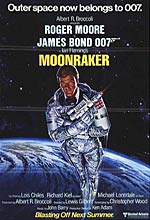 3. Drax Enterprise Corporation (Moonraker, 1979) – When your HR Director is a steel-toothed giant named Jaws, you know it can’t be a fun place to work. I don’t know, maybe it’s me, but there’s something about trying to poison all of humanity and starting over with a space-based master race of beautiful people that is sure to get your firm placed on a list of evil companies. On the plus side: though Drax himself looks like a deranged gourmand, the fitness program at DEC is the envy of the industry.
3. Drax Enterprise Corporation (Moonraker, 1979) – When your HR Director is a steel-toothed giant named Jaws, you know it can’t be a fun place to work. I don’t know, maybe it’s me, but there’s something about trying to poison all of humanity and starting over with a space-based master race of beautiful people that is sure to get your firm placed on a list of evil companies. On the plus side: though Drax himself looks like a deranged gourmand, the fitness program at DEC is the envy of the industry.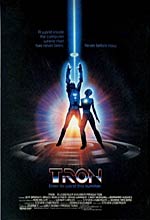 2. ENCOM (Tron, 1982) – This is another one of those picks that I can’t believe didn’t make anyone else’s list. I expect that to change when Tron: Legacy comes out in December, but let it be said that WWEnd called this one first. Before Microsoft Windows, there was the Master Control Program. Somebody call the Help Desk! This just in: Apple recently contacted ENCOM to see if they can borrow the shrink ray for Steve Jobs’ ego.
2. ENCOM (Tron, 1982) – This is another one of those picks that I can’t believe didn’t make anyone else’s list. I expect that to change when Tron: Legacy comes out in December, but let it be said that WWEnd called this one first. Before Microsoft Windows, there was the Master Control Program. Somebody call the Help Desk! This just in: Apple recently contacted ENCOM to see if they can borrow the shrink ray for Steve Jobs’ ego.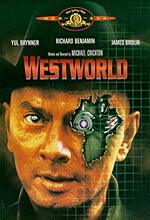 1. Delos (Westworld, 1973 / Futureworld, 1976) – Delos is guilty of several of the great cardinal sins of 70s sci fi cinema. First, they kill off both Yul Brynner and James Brolin in the first film. But that’s just a warm up act. In the sequel, Delos menaces investigative reporter Peter Fonda while attempting to replace all the world’s leaders with robot clones in a world domination scheme. But Delos’ final act of sabotage is relegating Yul Brynner to nothing more than a dream sequence cameo in his final film appearance. That’s like asking Joe Montana to be a backup quarterback. Sacrilege!
1. Delos (Westworld, 1973 / Futureworld, 1976) – Delos is guilty of several of the great cardinal sins of 70s sci fi cinema. First, they kill off both Yul Brynner and James Brolin in the first film. But that’s just a warm up act. In the sequel, Delos menaces investigative reporter Peter Fonda while attempting to replace all the world’s leaders with robot clones in a world domination scheme. But Delos’ final act of sabotage is relegating Yul Brynner to nothing more than a dream sequence cameo in his final film appearance. That’s like asking Joe Montana to be a backup quarterback. Sacrilege!It’s Not Easy Being Green
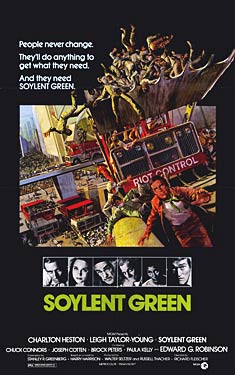
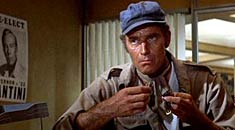
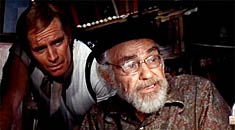

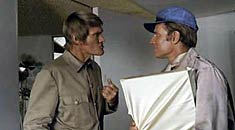
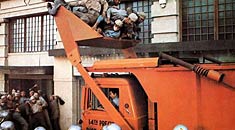
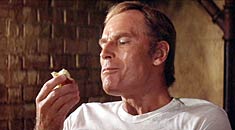
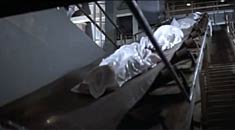
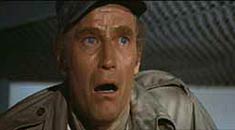
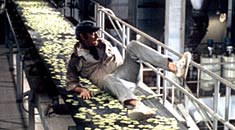
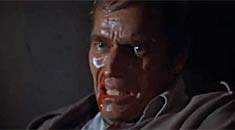
Soylent Green is made out of people.
Even if you haven’t seen 1973’s Soylent Green, you likely already know how it ends. It’s one of the worst kept secrets among sci-fi twist endings. In fact, the ending has become something of a cultural phenomenon, while the film itself is largely forgotten.
(Yeah, sorry for no spoiler alert.)
So, I watched Soylent Green this week, expecting some serious Soylent cheese. Instead, I found a surprisingly smart, gritty and still timely film that is much more than just another Chuck Heston fist-in-the-air primal scream.
Essentially, manly man Heston is a cop named Thorn in a futuristic pre-Giuliani New York circa 2022 with 40 million people, severe environmental damage and massive food shortages. Much of the film looks like it was shot through gauze to simulate the smog and filth of the dystopia. I think that also explains why everyone wears tan clothing. Nothing spells dystopia like tan clothing.
We’re told that real food is no longer available (as most animal life and vegetable life has gone the way of all flesh), so people subsist on Soybean-Lentil (aka Soylent) vegetable concentrates and the new, “plankton-derived” high protein Soylent Green.
That’s plankton if by plankton you mean someone’s Aunt Gertrude.
As the city is wildly overpopulated, most everyone is hideously impoverished and must share living space with other people. Chuck shares a pad with a Lawrence Ferlinghetti clone at what looks like the storage closet at City Lights bookstore. The clone, named Sol Roth, really is the heart of the film – an old man who remembers what life was like when there was life … and food.
It is Sol’s prosaic reminiscences about the good life before the world went to pot (and Heston’s tearful farewell at the old man’s death – sorry again on the no spoiler alert) that properly deliver the film’s message.
Long story short, a big Soylent corporate executive is assassinated and Chuck is on the case. Along the way, Heston very quickly moves in on the exec’s main squeeze and runs afoul of his one-time bodyguard (Rifleman Chuck Connors). Heston must also contend with food riots, whereby thousands of Doobie Brothers fans get bent out of shape and take it to the streets when the Soylent Green supplies run short.
While Heston spends most of the film doing manly 1970’s cop things like getting into fisticuffs and manhandling dames, Sol Roth uncovers the horrible truth about their foodstuffs and decides to opt for good old fashioned state-sanctioned suicide. It’s his deathbed confession and Heston’s subsequent investigation of just what the state does with the bodies that leads to the now famous conclusion of the film.
(Interesting Side Note: Sol Roth is escorted to his doom by none other than Dick Van Patton, the father from Eight is Enough, itself a 1970’s parable on population.)
Of course, I’m just paraphrasing the narrative. The story has grit and heart, it toggles between sci-fi and cop drama, and it’s more than just its punchline ending. For me, the reason the film didn’t make the leap from good to great is Heston himself.
When Heston encounters “the good life” of the dead executive – a good life that we would take for granted – his awe-struck reaction to things such as hot showers, apples and bar soap is supposed to bring home for us how deep is the loss.
But Heston isn’t the right guy for this job. He barrels through the movie as a sensual lout – the kind of guy you don’t want at your party because he swaggers in and drinks everyone else’s drinks. Kind of like that Spaulding kid from Caddyshack, only with a gun. And that damned ascot.
Heston’s square-jawed heroics are ill-fitted for the flawed character of Thorn who’s corrupt, opportunistic and ultimately frail and near hysterical with the corporate malfeasance he uncovers. The problem is that Heston is too macho and overly heroic for the audience to identify with.
Earlier this week, I saw a documentary about Jaws where Spielberg said that Heston wanted to play Chief Brody. Spielberg didn’t want to cast him because he thought that the shark wouldn’t stand a chance against Heston, with him being so larger than life. Spielberg said that Heston was like a 12, when the role of Brody called for an 8.
That was an eureka moment for me. Heston was just too much Heston for Soylent Green. The role of Thorn needed more vulnerability. It needed someone who could convey fear, wonder, weakness and regret in a more genuine way.
This got me to thinking that, recast with Dustin Hoffman, Soylent Green could have been masterful. Filmed at a time when Hoffman was making films like Straw Dogs and Papillon, Soylent Green could have mined deeper into the existential agonies and uncertainties of the 1970’s. The role of Thorn didn’t call for an action hero, but a thinking hero, someone who could richly expose our vulnerability and foolishness as we face the terrible consequences of the environmental monster we created. (Hello, BP.)
Soylent Green probes some interesting questions about human stewardship of the Earth. It deserves more than being relegated as the equivalent of a sci-fi one-liner.
 Editor’s Note: Soylent Green is based on the 1966 book Make Room! Make Room! by Harry Harrison.
Editor’s Note: Soylent Green is based on the 1966 book Make Room! Make Room! by Harry Harrison.
Red Skies at Night
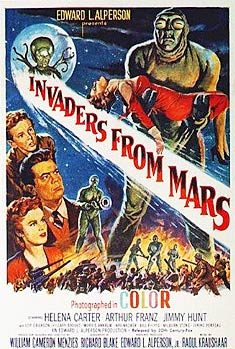

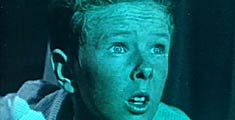
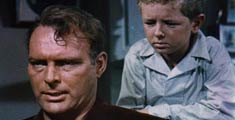
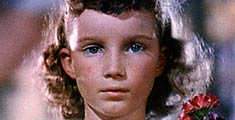
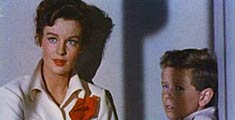
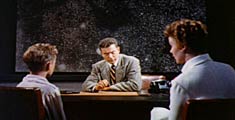
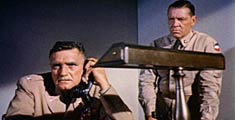

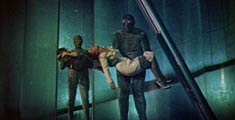
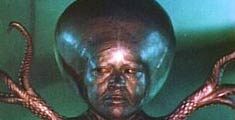
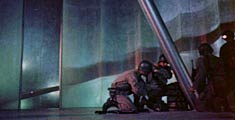
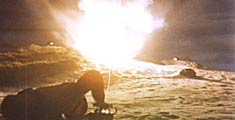
Call me Yankee Doodle Dandy, but I’m in a patriotic mood, with it being the Fourth of July weekend and all.
When you couple that with the recent news headline domination by Russian spy rings, it’s an ideal time to go old school and tap into some good old fashioned Cold War sci-fi from the 1950s.
So, I secured a copy of one of the hallmarks of 1950s commienoia, William Cameron Menzies’ 1953 opus Invaders from Mars.
Let me run things down for you. This film has everything that Uncle Sam would approve of in a parable about the Red scourge: Interstellar marauders that hide underground and employ mind control on hapless U.S. citizens. A cheeky young protagonist whose pluck, determination and belief in the American Way ultimately convinces the U.S. military that there just might be interstellar marauders hiding underground and attacking hapless U.S. citizens. A cornucopia of U.S. tank footage that would make General Patton wet his pants. And a giant alien baby head in a goldfish bowl with an unfortunate resemblance to Howard Dean.
All of this drama delivered in that stiff patois characteristic of overwrought 1950s science fiction.
Damn, I love America.
Boy hero David MacLean wakes up in the middle of the night during a thunder storm to witness an honest-to-gosh UFO land outside his family’s home. Dad, responding to the boy’s troubled cries, eventually goes to check things out. And then Dad checks out, as he falls into the hands of the aliens who plant a mind probe in his brain.
Dad returns home with a red sore at the base of his neck and in an angry stupor, looking like he spent a few too many nights at the Overlook Hotel. From there, things turn south as various townspeople fall prey to the aliens, including David’s mom, the police chief and an Army general. Even a little girl, Kathy Wilson, is not spared the ignominy of having her brain carjacked by the cosmic commies.
Fortunately, David is able to secure the aid of an astronomer and a beautiful health care professional. With their help, he’s able to defy logic and actually convince the military that them thar hills is loaded with alien bastards.
The military investigates and comes to the conclusion that they need to roll in a ton of tanks and start blowing things up. I tell you, there’s not much that makes me more proud as an American than hearing some gravelly voiced commander shout with full-hearted gusto, “Blast ‘em!”
Damn, I love America.
We learn through the course of action that the aliens came to Earth to destroy the nascent U.S. atomic space program by which we could send nuclear weapons to the stars. To scuttle our capabilities, the aliens sent their mind-controlled human puppets to attempt blowing up a top secret rocket; they burned down the home and attempted an assassination of one of our top scientists; and they killed several Hollywood B movie actors.
And you wonder why Ronald Reagan had it in for the commies.
The film concludes with the military rescuing the boy and the beautiful health care professional from the villainous clutches of the aliens, then blowing up the subterranean ship. We are treated to a hallucinatory montage of the film’s highlights as the boy, running from the blast area, reminisces about all the strange goings-on.
As the ship detonates, David wakes up in his bed. Was it all a dream? He goes to his parents’ room and they tell him to go back to sleep. Returning to his room, he looks out the window. And lo and behold, he sees a UFO land outside his family’s home. Eerie! But you got to love twist sci-fi endings, right?
I know you probably expect me to body slam the film for its cheesy effects (there were plenty) or its wooden characterizations (plenty of those, too). But I enjoyed it. It put me in touch with my inner John Wayne and riled me up. And I don’t mean The Searchers John Wayne, but rather Stagecoach John Wayne.
I do, however, need to ding the film on one major faux pas.
One of the scenes follows David’s mind-controlled old man as he aims to carry out a nefarious act of dastardliness. We cut to a scientist in a lab, messing around with test tubes. One of the lab flunkies comes in and passes on his condolences to the scientist for the loss of his daughter – at this point we learn the scientist is Dr. Bill Wilson, the main man behind the atomic rocket program as well as the father of the little girl who died after the aliens blew her mind-control device.
The flunkie remarks that he’s surprised to see Dr. Wilson working at the lab, given that his little girl just died, to which the good doctor remarks something along the lines of, “Yes it’s too bad, but the show must go on.”
So I’m thinking, obviously the doc is another alien-controlled sap. He must be, to be so callous and robotic. It made sense, since all the other people that the cosmic commies got their hands on turned into emotionless monsters.
But no, David’s mind-controlled dad shows up and tries to assassinate the doctor. So it became clear they weren’t working the same side.
Dr. Bill Wilson wasn’t an alien puppet. He was just some jerk with no freakin’ priorities.
I was like, really? You’ve got to be kidding. What lout heads to the office after the death of his only child? C’mon. If this guy is supposed to be some paradigm of scientific prowess, if he’s on our side, then what are we fighting for? Clearly we’re no better than the aliens or their puppets.
If that’s the best the doctor could muster emotionally, no wonder the 1960s were so generationally turbulent and rebellious. If I was a kid of that era, I’d be PO’d, too.
This obvious lack of character development aside, I think I really enjoyed the film. And like I said, any time you get the U.S. military blasting communists in the guise of space aliens, count me in.
Blast ‘em!
Damn, I love America. Happy birthday!
I Would Do Anything for Love (But I Won’t Watch That)
Awhile back I ruminated on the phenomenon of rock stars appearing in science fiction films.
While I’m still at a loss as to why this seems to be so pervasive, it did engender a little soul searching. And the conclusion that I came to is that, in matters of art and expression, it’s a two-way street. Give and take. Turnabout’s fair play, etc.
This got me to thinking, “What opportunities are there for science fiction films to encroach upon the musical landscape?”
You know, there have been a lot of bad science fiction films. A lot. A painful amount of lot. Like, “Man, that’s a lot of bad” lot. But what if some of those films had instead been sent out to us in the form of rock albums?
You know, there may be something to that.
So I present to you, unscientifically arrived at and totally subjective, my list of the
Top Ten Science Fiction Movies That Would Have Been Better as Concept Albums (and the Artists Who Should Have Recorded Them)
10) The Astronaut’s Wife (1999), as recorded by David Bowie
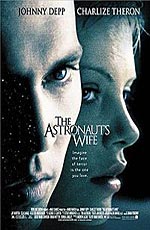 The Libretto: Johnny Depp as an astronaut? Okay, whatever. Anyway, during a spacewalk Depp and his fellow astronaut are overwhelmed by an explosion and lose contact with mission control for a couple of minutes. When they return to Earth, the other guy dies from a stroke and Depp starts acting weird. His wife, pregnant with twins, suspects that Depp is more Wonka’d than he’s letting on. Murder and mayhem commence. Before Depp dies, he transforms into an alien being who possesses his wife.
The Libretto: Johnny Depp as an astronaut? Okay, whatever. Anyway, during a spacewalk Depp and his fellow astronaut are overwhelmed by an explosion and lose contact with mission control for a couple of minutes. When they return to Earth, the other guy dies from a stroke and Depp starts acting weird. His wife, pregnant with twins, suspects that Depp is more Wonka’d than he’s letting on. Murder and mayhem commence. Before Depp dies, he transforms into an alien being who possesses his wife.
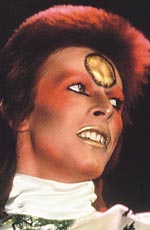 Why David Bowie? It was obvious that I had to put Bowie on this stinking list, so let’s just be done with it. Seriously though, Bowie is headmaster of the “Hey, I’m an Alien Weirdo Guy” school of rock ‘n’ roll. Not only that, but he’s equally comfortable with suave romantic ballads. Being able to balance weird aliens and romance is not a tightwire act that just anyone can pull off. Plus, his eyes are different colors, and his son directed the uber-cool Moon. Reasons enough for me.
Why David Bowie? It was obvious that I had to put Bowie on this stinking list, so let’s just be done with it. Seriously though, Bowie is headmaster of the “Hey, I’m an Alien Weirdo Guy” school of rock ‘n’ roll. Not only that, but he’s equally comfortable with suave romantic ballads. Being able to balance weird aliens and romance is not a tightwire act that just anyone can pull off. Plus, his eyes are different colors, and his son directed the uber-cool Moon. Reasons enough for me.
9) Species (1995), as recorded by Lady Gaga
 The Libretto: Picking up signals from outer space, scientists use the DNA information encoded in the messages to create an alien-human hybrid female. Worried that the creature is becoming uncontrollable, they attempt to kill her, but she escapes and makes her way to Los Angeles, where she hopes to make the most of the social scene. Hunted by a team of scientists, cops and a marriage counselor, she undergoes several changes of appearance.
The Libretto: Picking up signals from outer space, scientists use the DNA information encoded in the messages to create an alien-human hybrid female. Worried that the creature is becoming uncontrollable, they attempt to kill her, but she escapes and makes her way to Los Angeles, where she hopes to make the most of the social scene. Hunted by a team of scientists, cops and a marriage counselor, she undergoes several changes of appearance.
 Why Lady Gaga? After bursting onto the music and fashion scene and grabbing it by the collar with both hands, Lady Gaga has proven that she has the moxie to handle the Sex and the City/Alien mash-up that is Species. Known as much for her costumes as for her music, this is the long set piece that her career is ready for. Plus, H.R. Giger (the designer of the Species critter) once designed a music video for Debbie Harry of Blondie, whom Lady Gaga has been compared to.
Why Lady Gaga? After bursting onto the music and fashion scene and grabbing it by the collar with both hands, Lady Gaga has proven that she has the moxie to handle the Sex and the City/Alien mash-up that is Species. Known as much for her costumes as for her music, this is the long set piece that her career is ready for. Plus, H.R. Giger (the designer of the Species critter) once designed a music video for Debbie Harry of Blondie, whom Lady Gaga has been compared to.
8) Sunshine (2007), as recorded by Earth, Wind & Fire
 The Libretto: Here’s the scoop – the sun is dying. The only way to save it is for eight scientists to crash a spaceship into its heart and kick start it a la nuclear defibrillator. Not a plum assignment. But if they don’t do it, the world will die. Along the way, they run into technical difficulties, as well as the derelict of the previous mission which failed to deliver the goods. You know the guys on the second mission just had to hate the guys on the first mission for dropping the ball. There’s a lot of space mishaps that compound matters. And it’s so darn hot. Not an easy film to sit through at any time, but especially in Texas during the month of June.
The Libretto: Here’s the scoop – the sun is dying. The only way to save it is for eight scientists to crash a spaceship into its heart and kick start it a la nuclear defibrillator. Not a plum assignment. But if they don’t do it, the world will die. Along the way, they run into technical difficulties, as well as the derelict of the previous mission which failed to deliver the goods. You know the guys on the second mission just had to hate the guys on the first mission for dropping the ball. There’s a lot of space mishaps that compound matters. And it’s so darn hot. Not an easy film to sit through at any time, but especially in Texas during the month of June.
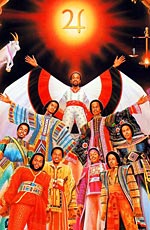 Why Earth, Wind & Fire? A big band with a bright sound and galactic aspirations, EWF were the sun kings of the 1970s musical landscape. Given that the band lineup averaged eight musicians during its various incarnations, each band member would have a role to play in Sunshine. Besides, I can just hear that sweet Philip Bailey falsetto hitting the high notes over the blare of horns as their ship does the ultimate solar swan dive. Shining star for you to see, what your life can truly be.
Why Earth, Wind & Fire? A big band with a bright sound and galactic aspirations, EWF were the sun kings of the 1970s musical landscape. Given that the band lineup averaged eight musicians during its various incarnations, each band member would have a role to play in Sunshine. Besides, I can just hear that sweet Philip Bailey falsetto hitting the high notes over the blare of horns as their ship does the ultimate solar swan dive. Shining star for you to see, what your life can truly be.
7) Surrogates (2009), as recorded by Todd Rundgren
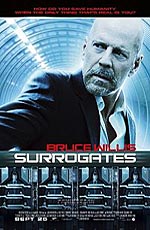 The Libretto: In the not-too-distant future, everyone has become a shut-in, preferring instead to vegetate in barcaloungers and experience life via android dopplegangers they are neurologically linked to. After FBI agent Bruce Willis’ android (who sports totally ridiculous Corbin Bernsen/L.A. Law hair) is blown to bits by reactionaries, he must venture from his couch and crack the murder case at direct risk to his own body. Oh yeah, he has to also try to rekindle the romance with his grief-stricken, shut-in wife.
The Libretto: In the not-too-distant future, everyone has become a shut-in, preferring instead to vegetate in barcaloungers and experience life via android dopplegangers they are neurologically linked to. After FBI agent Bruce Willis’ android (who sports totally ridiculous Corbin Bernsen/L.A. Law hair) is blown to bits by reactionaries, he must venture from his couch and crack the murder case at direct risk to his own body. Oh yeah, he has to also try to rekindle the romance with his grief-stricken, shut-in wife.
 Why Todd Rundgren? At first liberating from the fear of pain, ultimately the surrogate lifestyle proves debilitating as people become prisoners in their own homes, fearing to risk the dangers of everyday life. It’s that dichotomy of technological embrace / distrust that plays to Runt’s sensibilities. As a studio wunderkind, producer, video pioneer, early proponent of virtual reality and embracer of the possibilities of the Internet and interactive entertainment, Runt has built a career that readily embraced advances in technology. At the same time, his lyrics have often discoursed on the collision between man and the modern world.
Why Todd Rundgren? At first liberating from the fear of pain, ultimately the surrogate lifestyle proves debilitating as people become prisoners in their own homes, fearing to risk the dangers of everyday life. It’s that dichotomy of technological embrace / distrust that plays to Runt’s sensibilities. As a studio wunderkind, producer, video pioneer, early proponent of virtual reality and embracer of the possibilities of the Internet and interactive entertainment, Runt has built a career that readily embraced advances in technology. At the same time, his lyrics have often discoursed on the collision between man and the modern world.
6) The Hidden (1987), as recorded by The Smashing Pumpkins
 The Libretto: An alien creature with a taste for violence and body possession arrives in Los Angeles and goes on a crime spree. Particularly troubling for the LAPD is that the creature can jump from human host to human host, which presents just a few problems in tracking his identity. Enter the creepy stalker kid from Blue Velvet (only this time with a badge and a gun). He too is an alien, and together with his human cop buddy they manage to save the day. The film’s bittersweet ending and sincerity provide a surprising depth of pathos to what is otherwise a violent buddy flick.
The Libretto: An alien creature with a taste for violence and body possession arrives in Los Angeles and goes on a crime spree. Particularly troubling for the LAPD is that the creature can jump from human host to human host, which presents just a few problems in tracking his identity. Enter the creepy stalker kid from Blue Velvet (only this time with a badge and a gun). He too is an alien, and together with his human cop buddy they manage to save the day. The film’s bittersweet ending and sincerity provide a surprising depth of pathos to what is otherwise a violent buddy flick.
 Why The Smashing Pumpkins? For a narrative such as The Hidden, you need a band that is well-versed in shifting identities, wild mood swings and an easy vacillation along the musical scale from heavy rock to tender ballad. Enter the Smashing Pumpkins. While many bands may try to lay claim to that throne, very few are in the same league of heavy weirdness that seems to come second nature to the Pumpkins. Plus, as Billy Corgan writes all the songs, produces, engineers, gets the coffee and essentially plays all the instruments, his chameleon ways make him perfectly suited to tackle simultaneously the roles of both heroes and the villain.
Why The Smashing Pumpkins? For a narrative such as The Hidden, you need a band that is well-versed in shifting identities, wild mood swings and an easy vacillation along the musical scale from heavy rock to tender ballad. Enter the Smashing Pumpkins. While many bands may try to lay claim to that throne, very few are in the same league of heavy weirdness that seems to come second nature to the Pumpkins. Plus, as Billy Corgan writes all the songs, produces, engineers, gets the coffee and essentially plays all the instruments, his chameleon ways make him perfectly suited to tackle simultaneously the roles of both heroes and the villain.
5) Space Cowboys (2000), as recorded by The Highwaymen
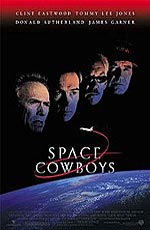 The Libretto: A crusty old Soviet satellite is about to fall to Earth, and the only ones who know how to handle its outdated motherboard is the equally crusty and outdated Air Force team of Eastwood, Jones, Sutherland and Garner. There’s a lot of human interest for awhile (including some backstory conflict between Eastwood and the NASA project director), then our boys are sent up in a space shuttle to deal with the Rusky orbiter which, whoa, is loaded with nuclear warheads. A lot of space catastrophe and heroic self-sacrifice ensues.
The Libretto: A crusty old Soviet satellite is about to fall to Earth, and the only ones who know how to handle its outdated motherboard is the equally crusty and outdated Air Force team of Eastwood, Jones, Sutherland and Garner. There’s a lot of human interest for awhile (including some backstory conflict between Eastwood and the NASA project director), then our boys are sent up in a space shuttle to deal with the Rusky orbiter which, whoa, is loaded with nuclear warheads. A lot of space catastrophe and heroic self-sacrifice ensues.
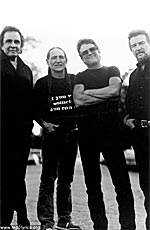 Why The Highwaymen? This is not an assignment for boys. For something this testosterone infused, you need real men. Real crusty men. Men like Willie. Waylon. Johnny. And Kristofferson. Throw in Steve Miller as the project director, and you have more countrified firepower than a Dairy Queen in Beaumont, Texas.
Why The Highwaymen? This is not an assignment for boys. For something this testosterone infused, you need real men. Real crusty men. Men like Willie. Waylon. Johnny. And Kristofferson. Throw in Steve Miller as the project director, and you have more countrified firepower than a Dairy Queen in Beaumont, Texas.
4) Megaforce (1982), as recorded by The Black Eyed Peas
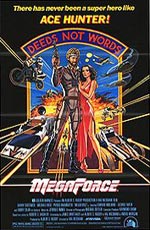 The Libretto: Directed by the man who brought you Smokey and the Bandit and The Cannonball Run, this tale follows the exploits of a crack fighting squad led by Ace Hunter (Barry Bostwick of Nancy Drew fame). They battle international terrorism with the help of missile-firing motorcycles and dune buggies. It gets bonus points for featuring Michael Beck (otherwise known as Swan from The Warriors) as one of the Megaforce dudes. Plus it stars the bald babe from Star Trek: The Motion Picture.
The Libretto: Directed by the man who brought you Smokey and the Bandit and The Cannonball Run, this tale follows the exploits of a crack fighting squad led by Ace Hunter (Barry Bostwick of Nancy Drew fame). They battle international terrorism with the help of missile-firing motorcycles and dune buggies. It gets bonus points for featuring Michael Beck (otherwise known as Swan from The Warriors) as one of the Megaforce dudes. Plus it stars the bald babe from Star Trek: The Motion Picture.
 Why The Black Eyed Peas? The military spandex. The Bee Gees hair. The beautiful woman. And lots of explosions. This thing was tailor made for a Black Eyed Peas video. Picture Will.I.Am, Taboo and Apl.De.Ap parachuting to the stage on phunked out motorcycles while Fergie struts out dressed like a discotastic Fidel Castro. Boom boom pow.
Why The Black Eyed Peas? The military spandex. The Bee Gees hair. The beautiful woman. And lots of explosions. This thing was tailor made for a Black Eyed Peas video. Picture Will.I.Am, Taboo and Apl.De.Ap parachuting to the stage on phunked out motorcycles while Fergie struts out dressed like a discotastic Fidel Castro. Boom boom pow.
3) They Live (1988), as recorded by Iggy & The Stooges
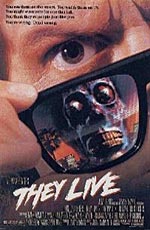 The Libretto: A homeless, flannel shirted professional wrestler finds a pair of Ray Ban knock-offs at a bulldozed church, and suddenly his world is turned upside down (like things weren’t bad enough before). Subliminal advertising is everywhere, telling him to breed, sleep, eat and consume (as if he needed the pointers). Even worse, Los Angeles is run by hordes of alien yuppies who look like Skeletor from Masters of the Universe and who use a TV station to hypnotize humanity.
The Libretto: A homeless, flannel shirted professional wrestler finds a pair of Ray Ban knock-offs at a bulldozed church, and suddenly his world is turned upside down (like things weren’t bad enough before). Subliminal advertising is everywhere, telling him to breed, sleep, eat and consume (as if he needed the pointers). Even worse, Los Angeles is run by hordes of alien yuppies who look like Skeletor from Masters of the Universe and who use a TV station to hypnotize humanity.
 Why Iggy & The Stooges? Thematically this story is, at its heart, every punk rocker’s war cry. But what it really comes down to is a question of who among punk’s royalty really has the cajones to deliver this immortal line with conviction: “I have come here to chew bubblegum and kick ass … and I’m all out of bubblegum.” This is not something that can be said with an English accent (sorry, Joe Strummer). For my money, only Iggy Pop could pull it off.
Why Iggy & The Stooges? Thematically this story is, at its heart, every punk rocker’s war cry. But what it really comes down to is a question of who among punk’s royalty really has the cajones to deliver this immortal line with conviction: “I have come here to chew bubblegum and kick ass … and I’m all out of bubblegum.” This is not something that can be said with an English accent (sorry, Joe Strummer). For my money, only Iggy Pop could pull it off.
2) Hollow Man (2000), as recorded by The Who
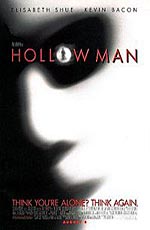 The Libretto: A brilliant but psychotically self-obsessed scientist develops an invisibility serum for the military, and of course he tests it on himself. Unable to restore himself to visible normalcy, jealous over his ex-girlfriend’s social life and furious at his team’s disapproval of his nocturnal criminal activities, the hollow man hunts down his team members one by one until he’s eventually hurled into an inferno at the film’s climax.
The Libretto: A brilliant but psychotically self-obsessed scientist develops an invisibility serum for the military, and of course he tests it on himself. Unable to restore himself to visible normalcy, jealous over his ex-girlfriend’s social life and furious at his team’s disapproval of his nocturnal criminal activities, the hollow man hunts down his team members one by one until he’s eventually hurled into an inferno at the film’s climax.
 Why The Who? The kings of concept, The Who created and mastered rock opera in one fell swoop with Tommy, that magical deaf, dumb and blind boy who could play a mean pinball. A few years later, Townshend and company delivered a second seismic shot of epic teen angst with Quadrophenia, following the exploits of Jimmy and his four distinct personalities. Hollow Man completes the trilogy of disaffection – this time, instead of the hero being unable to see, he is unable to be seen by the society that he loathes and who loathes him. No one knows what it’s like to be the bad man.
Why The Who? The kings of concept, The Who created and mastered rock opera in one fell swoop with Tommy, that magical deaf, dumb and blind boy who could play a mean pinball. A few years later, Townshend and company delivered a second seismic shot of epic teen angst with Quadrophenia, following the exploits of Jimmy and his four distinct personalities. Hollow Man completes the trilogy of disaffection – this time, instead of the hero being unable to see, he is unable to be seen by the society that he loathes and who loathes him. No one knows what it’s like to be the bad man.
1) The Incredible Melting Man (1977), as recorded by Meat Loaf
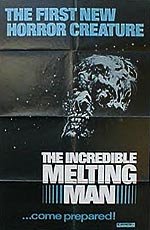 The Libretto: The lone survivor of a failed mission to Saturn returns to Earth suffering from some kind of space radiation that causes his body to melt. To combat the process of melting, he has to eat people. Eventually, he melts away to nothing and is swept into a garbage can. But a radio newscast at the end tells us a future Saturn mission is in the works.
The Libretto: The lone survivor of a failed mission to Saturn returns to Earth suffering from some kind of space radiation that causes his body to melt. To combat the process of melting, he has to eat people. Eventually, he melts away to nothing and is swept into a garbage can. But a radio newscast at the end tells us a future Saturn mission is in the works.
 Why Meat Loaf? A hulking, sweaty mass with the voice of an angel and a flair for the dramatic, Meat Loaf just very well may have been the best frontman of the 70s. Really. Able to defy convention time and again and deliver massive-selling albums (and even being cool enough to land a role in Fight Club), Meat Loaf is the epitome of rock ‘n’ roll outcast. In Meat Loaf’s hands, Incredible Melting Man chronicles in operatic fashion a man shedding all layers to reveal the romantic loner at his core.
Why Meat Loaf? A hulking, sweaty mass with the voice of an angel and a flair for the dramatic, Meat Loaf just very well may have been the best frontman of the 70s. Really. Able to defy convention time and again and deliver massive-selling albums (and even being cool enough to land a role in Fight Club), Meat Loaf is the epitome of rock ‘n’ roll outcast. In Meat Loaf’s hands, Incredible Melting Man chronicles in operatic fashion a man shedding all layers to reveal the romantic loner at his core.
Working Class Dog
 These last two years have been particularly tough on the American worker.
These last two years have been particularly tough on the American worker.
A turbulent economy. Industries roiling on the brink of collapse. Layoffs and pay cuts. Government takeovers and bailouts. An increase in disaster epics at your local cinema. And more zombie films.
A big downer all around.
Basically if you’ve remained employed during this time, you were one of the lucky ones. (A fact not lost on the evil overlords at the C-level of your company.)
A few highlights from the Bureau of Labor Statistics / June 4, 2010:
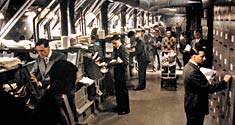 In May, the number of long-term unemployed (those jobless for 27 weeks and over) was about unchanged at 6.8 million. These individuals made up 46.0 percent of unemployed persons, about the same as in April.
In May, the number of long-term unemployed (those jobless for 27 weeks and over) was about unchanged at 6.8 million. These individuals made up 46.0 percent of unemployed persons, about the same as in April.
Among the marginally attached, there were 1.1 million discouraged workers in May, up by 291,000 from a year earlier. (The data are not seasonally adjusted.) Discouraged workers are persons not currently looking for work because they believe no jobs are available for them.
 However, media and industry pundits are starting to point to signs that the job market is beginning to turn.
However, media and industry pundits are starting to point to signs that the job market is beginning to turn.
Really? Hmm. Your friends at Worlds Without End figured we’d put this budding optimism to the test. It wouldn’t be socially responsible of us if we just took this information on face value. After all, if science fiction films of the last thirty years have taught us anything, it’s that you can’t trust the government or big business.
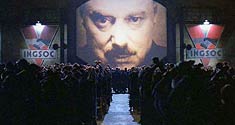 (Interesting to note is the evolution of villainy in science fiction films from rogue government agencies in the 1970s to corporate entities in the 1980s and beyond. Some try to blame Reagan for the Gordon Gekkozation of sci fi’s malevolent wonders. For my money, the blame goes to the hippies. After all, wasn’t it in the 1980s when they finally discovered gainful employment? And showers? The shift of collective hippie anger from government to business is hardly surprising, when seen in this light.)
(Interesting to note is the evolution of villainy in science fiction films from rogue government agencies in the 1970s to corporate entities in the 1980s and beyond. Some try to blame Reagan for the Gordon Gekkozation of sci fi’s malevolent wonders. For my money, the blame goes to the hippies. After all, wasn’t it in the 1980s when they finally discovered gainful employment? And showers? The shift of collective hippie anger from government to business is hardly surprising, when seen in this light.)
To that end, we devised a special socio-economic project for our WWEnd intern, Barry. Young, foolhardy and naively trusting of his WWEnd supervisors, Barry is up for just about any assignment, which makes him the perfect intern.
(“Intern,” as anyone who has ever interned will tell you, is a code word for “slave labor.”)
Barry’s assignment? To secure a position – any position – at a real company, using a resume peppered with fictitious evil corporations from science fiction films of the last 30 years.
We wish to learn if: 1) companies really are starting to ramp up their new hire positions, as pundits claim; and 2) just how savvy their hiring executives are.
We’re sending Barry out with a variety of resumes and a borrowed suit. He’ll pound the pavement over the course of the summer and report back to WWEnd. We’ll tabulate his progress and then share the results with you in a future installment.
Happy hunting.
The Things We Do for Love
 EDITOR’S NOTE: The following was sent to us through an anonymous email account. We have attempted to contact Paul to ensure his well being, but so far we have failed to reach him. If you know of his whereabouts, please contact the proper authorities before he harms himself.
EDITOR’S NOTE: The following was sent to us through an anonymous email account. We have attempted to contact Paul to ensure his well being, but so far we have failed to reach him. If you know of his whereabouts, please contact the proper authorities before he harms himself.
As you may or may not remember, I committed to watching Battlefield Earth from start to finish in an attempt to raise funds for the Worlds Without End tribute fund for St. Jude Children’s Research Hospital.
To follow is my account of the viewing. So here we go…
First impression: It is the Year 3000. Movies no longer include credits. They don’t want you to know who made this picture.
Two minutes in: A bunch of cave people in a post-apocalyptic setting. I think they’re outtakes from either Clan of the Cave Bear or The Flintstones in Viva Rock Vegas. Not sure which.
We’re to understand humanity is an endangered species in the future. The real endangered species are the agents who got their stars to agree to make this picture.
Three minutes in: First instance of melodrama, as our hero Goodboy learns of his father’s death. The old man had it easy. I’ve got two hours to go.
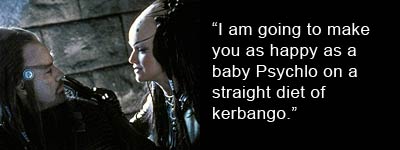 15 minutes in: Humans, captured by the alien bad guys, are forced to wear nose plugs. I assume it’s due to the noxious odors of the script being consulted offstage. Do they have something to plug my eyes?
15 minutes in: Humans, captured by the alien bad guys, are forced to wear nose plugs. I assume it’s due to the noxious odors of the script being consulted offstage. Do they have something to plug my eyes?
I’m suddenly reminded of Vinnie Barbarino, circa 1975: “Up your nose with a rubber hose.”
Two minutes later, Barbarino himself appears for the first time in all his glorious Travoltage™. Codpiece. Kiss boots. Klingon makeup. Villainous stare. Hyena laugh. Greatness.
19 minutes in: Slow motion angry prison shower. Where’s Leon Isaac “Too Sweet” Kennedy?
28 minutes in: Human prisoners in a zoo are fed some kind of food paste via firehoses. Several of the adult males actually fight to see who gets to eat first. Please. Let me starve to death.
33 minutes in: Alien bad guys get mani-pedis. A long fingered alien babe rubs the old fat alien guy’s head. Talk about women’s suffrage.
43 minutes in: Goodboy and buddies, having been allowed to escape, make their way to the wilderness of Denver. Among the highlights of their trip: they catch and eat an uncooked rat. Zagat Denver lodges massive internet protest.
48 minutes in: Alien hologram apologizes to Goodboy. But where is the apology to me?
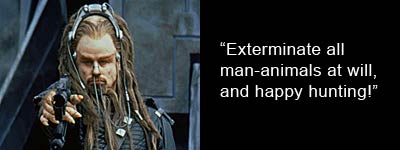 51 minutes in: Goodboy draws pictures on the prison floor, trying to explain the movie plot to the rest of the cast. Lots of blank stares.
51 minutes in: Goodboy draws pictures on the prison floor, trying to explain the movie plot to the rest of the cast. Lots of blank stares.
At what point did this stop being a movie and start being a Phish concert?
54 minutes in: Vinnie Barbarino force feeds a dead rat to Goodboy. Watching this I can’t help but empathize. I too am being force fed a dead rat
63 minutes in: A cave guy gets his head blown off. Lucky. I wish someone would blow my head off.
72 minutes in: My teeth. I can’t feel my teeth.
79 minutes in: Cave men discover cache of unused USAF fighters and a nuclear device at abandoned Ft. Hood complex.
My seven year old daughter joins the viewing. She says, “They all look like a bunch of hobos.” I wonder, “Why are the hobos playing with a nuclear device?”
I shoo her away. “Save yourself!”
83 minutes in: Outer body experience: Feeling strange. I realize I’m not alone.
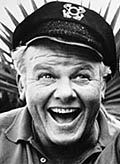 An apparition of The Skipper from Gilligan’s Island appears to me, telling me I need to purge my system. Keeps calling me “Little Buddy.” Makes me nervous.
An apparition of The Skipper from Gilligan’s Island appears to me, telling me I need to purge my system. Keeps calling me “Little Buddy.” Makes me nervous.
95 minutes in: Epic battle between aliens and cavemen. The Caveman Air Force arrives in USAF Harriers. Aerial dogfight ensues.
Let’s see. Illiterate and lacking even a rudimentary education, nonetheless the cave dwelling hair metal aficionados master advanced aviation.
Sure, I’ll buy that.
107 minutes in: I don’t want to give away the ending, but several of the key caveman heroes go kamikaze and commit suicide to save their friends – or their careers. Lone caveman, armed with a nuclear device, blows up planet Psychlo.
119 minutes in: I’m going to watch it again.
Cool Hand, Luke
 There was a lot of bad juju going down on this date 30 years ago today.
There was a lot of bad juju going down on this date 30 years ago today.
A guy got his hand chopped off. By his own dad. The same dad who froze his best friend alive. The same best friend who macked down on handless guy’s girlfriend. The same girlfriend who would later turn out to be handless guy’s sister.
We’re not talking about the Maury Povich show.
We’re talking about the release of Star Wars Episode V: The Empire Strikes Back on this date in 1980. It is for many fans, hands down, the best of the six Star Wars films.
I remember sitting in a Perkins restaurant in upstate New York with Mama Thies, Papa Thies and Big Brother Thies, post-Empire screening. The Family Thies, like many families of the era, was furiously debating the great question that would perplex and titillate the entire world for the next three years: was he or wasn’t he Luke’s father?
If I remember correctly, the scorecard for the Family Thies debate was Papa Thies (“Yes, he is Luke’s father”); Mama Thies (“No, he’s a liar trying to get into Luke’s head”); and Big Brother Thies (“Can I have more bacon, please?”).
Me? Well, to tell the truth, during that fateful meal I was more preoccupied with the whole chopped off hand thing. And frozen Solo. I mean, I was 10, those were my two favorite action figures, and they both got their butts seriously kicked. I thought the world was coming to an end.
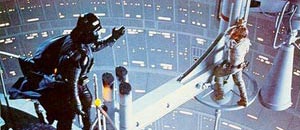 Empire single-handedly assured that big budget science fiction in the modern era could be meaningful and challenging, without losing its grip on the razzle and the dazzle. Plus, you had to wait three long years to find out the answer. None of this, “We’ll pump out the sequel in six months, with the DVD to follow two months afterwards, assuming the Internet hasn’t already spoiled the surprise for you.”
Empire single-handedly assured that big budget science fiction in the modern era could be meaningful and challenging, without losing its grip on the razzle and the dazzle. Plus, you had to wait three long years to find out the answer. None of this, “We’ll pump out the sequel in six months, with the DVD to follow two months afterwards, assuming the Internet hasn’t already spoiled the surprise for you.”
In honor of its release, I had planned to do a feature on 10 Famous Carpal Tunnel Procedures in Science Fiction (you know, because Luke got his hand cut off, yadda yadda).
But I got scooped.
Earlier this month, the guys at Den of Geek released a list of 10 movie characters who didn’t need hands, to celebrate the release of the new Nightmare on Elm Street movie.
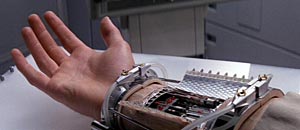 This was a bummer, as my list was going to feature the David Carradine character “Frankenstein” from Death Race 2000 (whose right hand was a grenade. Get it? Hand grenade!), as well as “C. A. Rotwang” from Metropolis. You know, 1927, Fritz Lang, robot lady movie. The mad scientist in that film had a mechanical right hand. Going way old school on that pick.
This was a bummer, as my list was going to feature the David Carradine character “Frankenstein” from Death Race 2000 (whose right hand was a grenade. Get it? Hand grenade!), as well as “C. A. Rotwang” from Metropolis. You know, 1927, Fritz Lang, robot lady movie. The mad scientist in that film had a mechanical right hand. Going way old school on that pick.
I was also going to include Michael Ironside as “Overdog” from 1983’s Spacehunter, but I have learned there’s this whole subculture devoted to Michael Ironside films where he loses his hand. Bravo! I’m not sure if that’s really cool, or pathological.
Well, of course with these developments I couldn’t proceed with the Carpal Tunnel list. What to do?
I started to ruminate over Empire Strikes Back. What, if anything, about this movie hasn’t been scrutinized to death? What small aspect of its overwhelming cultural influence hasn’t been explored and appreciated?
Then it hit me. The answer was pretty obvious.
Lando Calrissian’s mustache.
It is a mustache worthy of entry into the Barney Miller Hall of Fame of Mustaches. Sleek and elegant, it literally purrs the words “space pirate”. This led me to consider what other Dr. Philtastic mustaches have been proudly displayed in science fiction. And so we give you, on this 30th anniversary of Empire Strikes Back:
The 30 Greatest Mustaches in Science Fiction:
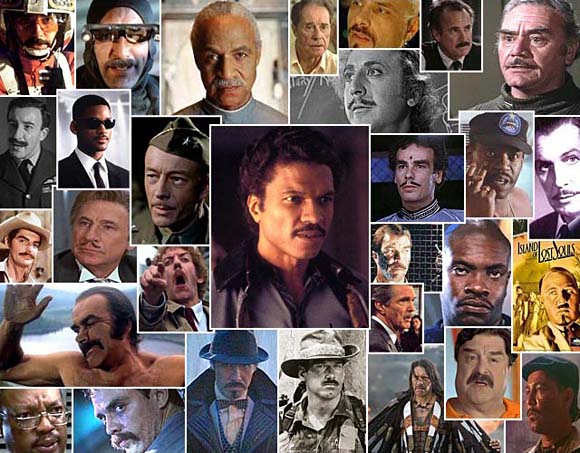
- Don Ameche as Art Selwyn / Cocoon (1985)
- Richard Benjamin as Peter Martin / Westworld (1973)
- Michael Biehn as Lt. Hiram Coffey / The Abyss (1989)
- Rubén Blades as Danny Archuleta / Predator 2 (1990)
- Ernest Borgnine as Harry Booth / The Black Hole (1979)
- Mel Brooks as President Skroob / Spaceballs (1987)
- Dabney Coleman as McKittrick / Wargames (1983)
- Sean Connery as Zed / Zardoz (1974)
- Keith David as Childs / The Thing (1982)
- Robert De Niro as Archibald ’Harry’ Tuttle / Brazil (1985)
- Ron Glass as Shepherd Book / Serenity (2005)
- John Goodman as Pops Racer / Speed Racer (2008)
- Garrick Hagon as Biggs Darklighter / Star Wars: A New Hope (1977)
- Charles Laughton as Dr. Moreau / Island of Lost Souls (1932)
- Al Matthews as Sgt. Apone / Aliens (1986)
- Edward James Olmos as Gaff / Blade Runner (1982)
- Joe Pantoliano as Cypher / The Matrix (1999)
- Vincent Price as Dr. Robert Morgan / The Last Man on Earth (1964)
- Tom Selleck as Sgt. Jack R. Ramsay / Runaway (1984)
- Peter Sellers as Group Captain Lionel Mandrake / Dr. Strangelove (1964)
- Tom Skerritt as David Drumlin / Contact (1997)
- Will Smith as Agent J / Men in Black (1997)
- Dean Stockwell as Doctor Wellington Yueh / Dune (1984)
- Donald Sutherland as Matthew Bennell / Invasion of the Body Snatchers (1978)
- Danny Trejo as Machete / Planet Terror (2007)
- Les Tremayne as Maj. Gen. Mann / The War of the Worlds (1953)
- Jesse Ventura as Blain / Predator (1987)
- Gene Wilder as Victor Von Frankenstein / Young Frankenstein (1974)
- Billy Dee Williams as Lando Calrissian / Star Wars: The Empire Strikes Back (1980)
- Paul Winfield as Lieutenant Ed Traxler / The Terminator (1984)
Happy birthday, Empire.



















 Full Details
Full Details

